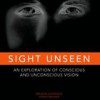
Researchers at the University of Toronto discover how the body’s muscles accidentally fall asleep while awake
Normally muscles contract in order to support the body, but in a rare condition known as cataplexy the body’s muscles “fall asleep” and become involuntarily paralyzed. Cataplexy is incapacitating because it leaves the affected individual awake, but either fully or partially paralyzed. It is one of the bizarre symptoms of the sleep disorder called narcolepsy. Continue reading









 September 2013 – A new edition of Sight Unseen, An Exploration of Conscious and Subconscious Vision, Edited by Melvyn Goodale and David Milner, has recently been published by the Medicine Department at Oxford University Press.
September 2013 – A new edition of Sight Unseen, An Exploration of Conscious and Subconscious Vision, Edited by Melvyn Goodale and David Milner, has recently been published by the Medicine Department at Oxford University Press. 



